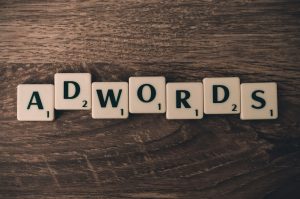Can Successful Viral Ad Campaigns Be Planned or is it Just Luck?

Some say that viral success is down to luck as much as is ingenuity, but this viewpoint tends to overlook the incredibly hard work, and the truly inspiring ideas, behind the world’s most hard-hitting campaigns. Because the truth is, successful viral ad campaigns don’t just happen on someone’s lucky day.
The success of viral campaigns is always down to the fact that they combine everything a great ad campaign needs – and they do it in such a smart way that people can’t resist sharing the end result until, ultimately, it goes viral.
How To Plan A Successful Viral Ad Campaign
Successful viral ad campaigns are creative, and they usually make an emotional connection with all those who stumble upon them. They also tend to be released at the perfect time for the message they’re aiming to convey, and they’re always original too.
Take a look at some of the key components of top viral campaigns for tips on how to create your own successful viral ad.
Creativity
If you want to go viral, you need to be clever about how you share your message. Creativity is at the very heart of viral success, and it’s something the world’s best advertising teams have in abundance. Look back at some of the most memorable viral campaigns and think about how imagination has been used to get a message across.
Timing
Timing can make or break a campaign, particularly if the team behind it has aspirations of viral fame. Some of the most talked-about campaigns of recent years have only become so well known because of how great their timing was. So, try to be flexible in your strategies. Remember that a lightning-quick response to current events and talking points could be just the thing you need to go viral.
Emotional Connection
Marketers use emotion all the time, but when a team manages to make a real emotional connection through an advertising campaign, great things can happen. Of course, emotional messages don’t work for every brand, but if you can put a slant on your message that might tug at the heartstrings of your target audience, you just might have an idea worth pursuing.
Visual Impact
Viral campaigns tend to be visual in nature because a visual campaign stands the best chance of attracting the most attention in a short space of time. So, think about how you can add more visual elements to your advertising, ensuring that they are as impactful as possible, wherever audiences might see them. Don’t get too carried away here though – visual elements need to remain both relevant to your brand and compatible with your target audiences to ensure they don’t miss the mark and alienate potential customers.
Originality
No one will share a campaign if they’ve seen the idea before. Present your audience with something that feels fresh and new, though, and you’re far more likely to see the organic reach of your campaign start to soar. Take inspiration from other campaigns you admire, but try to create something your audience will never have seen before to give your ad the best possible chance of being shared far and wide. These tips on how to write a viral headline might be just the starting point you need.
Shareability
If you want people to spread the word about your campaign for you, then you need to make it as easy as possible for them to do so. Add sharing buttons on all your digital content, make sure you’ve got a unique hashtag that’s short and catchy enough to be remembered, and monitor the online conversation, taking an active role where possible to keep audiences talking.
Forget luck, it’s hard work that makes a campaign go viral
While it’s easy to look back at recent viral campaigns and assume that Lady Luck had a part to play in their success, it’s far more likely that these highly shareable ideas are the result of huge amounts of hard work, from some of the brightest minds in the industry.
About the Author





 Many marketers and business leaders believe a website is complete when it goes live. However, a
Many marketers and business leaders believe a website is complete when it goes live. However, a